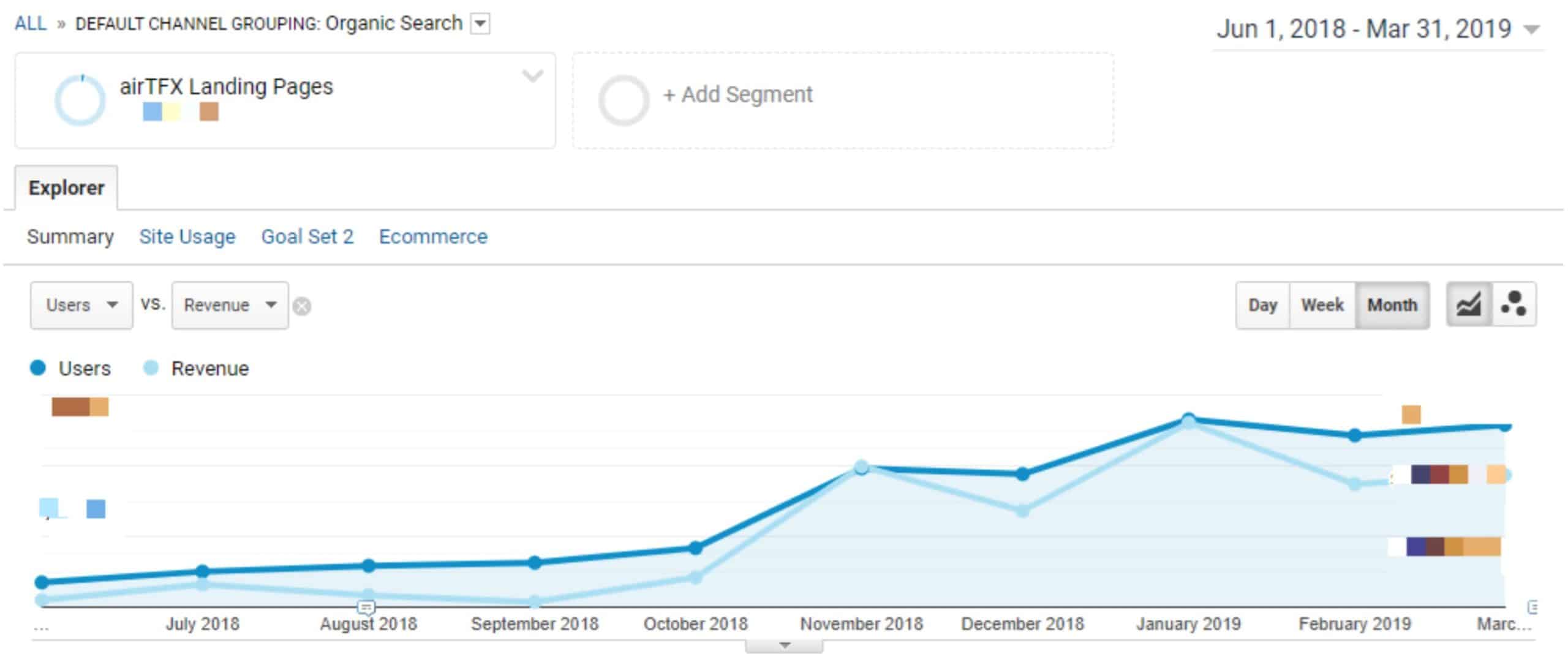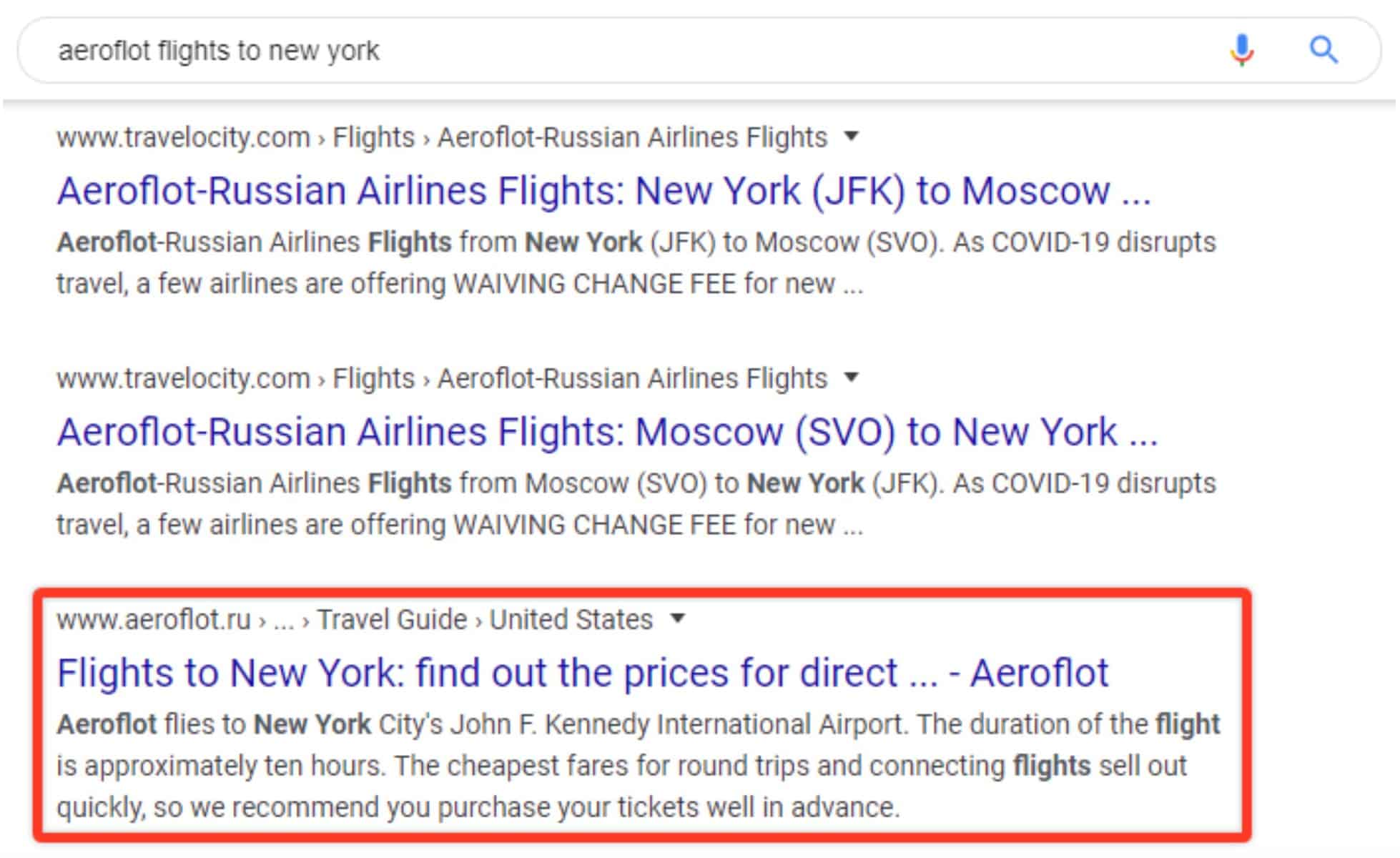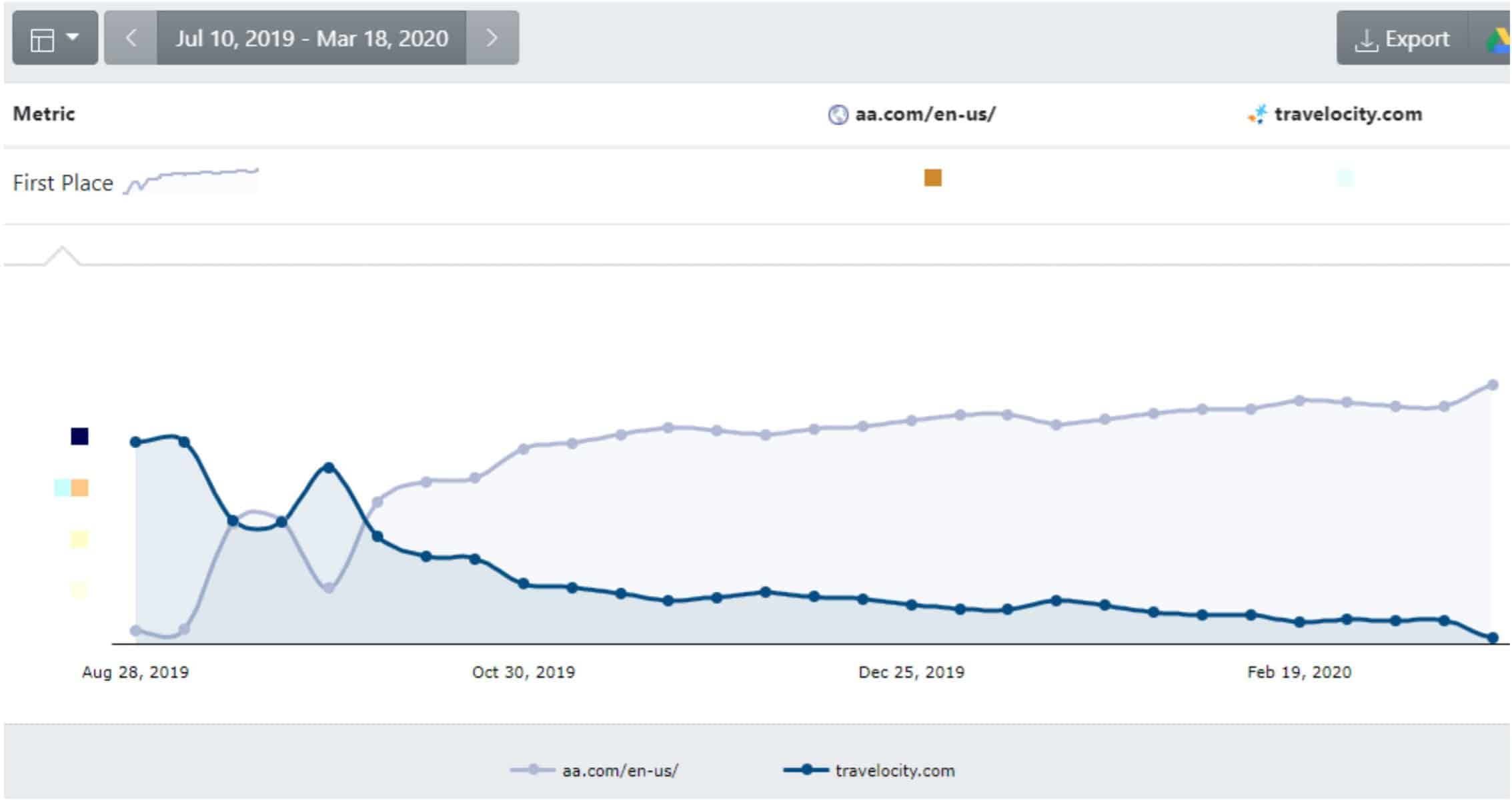Create Landing Pages for Flight Destinations
SEO for Airlines
Launching dedicated flight pages for every origin and destination can provide an airline with an unmatched capability to attract traffic and generate bookings.
This is why Online Travel Agencies (OTAs) devote massive resources toward developing millions of high-performance landing pages for flight destinations.
For example, according to SEMrush, Kayak has created thousands of flight pages that receive 8.5 million users from organic searches. This amount of traffic would cost $6.5 million monthly in Google Ads, but it’s all organic!

We have seen noticeable results for our customers after adopting airTRFX, a fare marketing platform to launch and manage unlimited route pages, in every language and country. These pages are grouped into “page templates” that target the different keyword permutations that users type in search engines to find flight offers:
- Destinations (or Homepage)
- Flights from City to City
- Flights to City
- Flights from City
- Flights from Country to Country
- Flights to Country
- Flights from Country
For example, 10 months after launching more than 2K airTRFX pages in June 2018, Spirit Airlines has:
- Grown the number of target non-branded keywords on the 1st page by more than 290% across the top search engines only in the US.
- Generated additional 2M+ Organic Sessions compared to the previous year.
- Reached an Organic ROI of more than 7,526.5%, brought about by additional 68,000+ organic transactions and an increase of Organic Revenue by 12.7%.

We have also helped our customers regain their natural position in search results pages for branded search queries. For example, it’s common for some OTAs to outrank airlines on Google even for branded keywords, such as “Aeroflot flights to New York”:

American Airlines was one of those airlines that lagged behind Travelocity in Google US search engine, particularly for branded searches with purchasing intent. These are search queries on Google that denote buying intent and include the airline’s name (e.g.: “American Airlines cheap flights to Chicago”).
As the timeline chart below shows, before launching airTRFX in August 2019, American Airlines barely ranked in first place for this type of keywords. But after just a couple of months of deploying airTRFX, American Airlines started to outrank Travelocity. As of March 2020, Travelocity has lost the first place for almost all these keywords.

By not ranking first on Google for branded searches with purchasing intent, airlines may be leaving a significant chunk of revenue on the table. For example, we estimate that there are around 300K monthly searches in the US from users actively looking to book a flight with American Airlines.
Airlines shouldn’t assume that they will capture branded traffic by default. Your airline may not be as popular as American Airlines, but you definitely don’t want an OTA receiving most of the traffic that your airline’s website should own. OTAs know the value of branded traffic for airlines, which is why many have launched dedicated pages for airlines. For example, it’s very likely that Kayak or Skyscanner already have a page targeting branded searches for your airline.
Branded searches shouldn’t be underestimated, especially the type that denotes buying intent. If your airline does not have the infrastructure to generate pages to target branded traffic, consider investing in airTRFX, which can help your airline own the traffic coming from branded searches instead of giving it away to OTAs.
